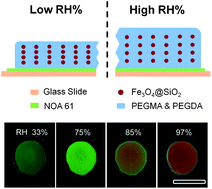The audience at Arthur Ashe Arena at Flushing Meadows were on their feet with a huge round of applause after the scintillating first set of tennis between Shui Peng and Caroline Wosniacki at the US Open 2014, one of the biggest and most renowned stages for tennis championships. It was 82F(29 oC) out there with grueling conditions for playing. One of the finest tennis contests was being produced until suddenly Shui was struck by cramp in her left leg which is a symptom of many heat related illnesses. After 10 minutes of high drama in the presence of nearly 20000 tennis frenzied crowds, Shaui Peng had to retire after several futile attempts to pursue her quest for the US open title. Multiple events of this sort have prevailed in the history of the sports, also cases where athletes have withdrawn from competitions because of grueling weather forecasts are omnipresent . Being a sport enthusiast, I was forced to wonder, is it just temperature that is a culprit for heat illness or there is something else as a “partner in crime”?!
It turned out that not only temperature but an amalgamation of high temperatures with high humidity levels is what causes heat illness. It was 82F when Shuai had to to retire but more importantly the humidity level was an all time high 77%!
One might wonder whats up with this combo of high temperature and humidity levels? High humidity levels makes it seem hotter. For example according to heat index, temperature of 95 F feels like 95F when humidity level is 30%, but the same 95 F feels like whopping 125F when humidity level is 70%. To understand how this works, one needs to know the human body’s cool down mechanisms. Cooling mechanisms of the body operate through sweating, alteration in the rate of blood flow and increased respiration when outside temperatures become higher than the body’s temperature. If the relative humidity levels are high, the rate of evaporation of water from the skin is dampened and hence the cooling mechanism through sweating fails leading to an increase in the body temperature resulting in loss of nutrients and fatigue earlier than in normal conditions. This is when human body suffers from heat cramps, heat stroke and short heat illness. This is how relative humidity should also be blamed for heat illness along with temperature.
Facile detection of humidity levels is very crucial for taking proactive measure to avoid heat illness. Xuan et al in a very fine effort, develop a novel humidity sensor based on magnetically assembled photonic nanocrystal. This nanocrystal is sensitive to humidity levels and changes to different colours with different humidity levels as a response. The humidity level can be easily assessed just by looking at the nanocrystal’s color. This work which is cited below not only reports brilliant synthesis of nanocrystals for humidity detection but also investigates the effect of change in different parameters of nanocrystals on the sensitivity of the detection.
Magnetically assembled photonic crystal film for humidity sensing.
Ruyang Xuan, Qingsheng Wu, Yadong Yin and Jianping ge
J. Mater. Chem., 2011,21, 3672-3676
Padmanabh Joshi is a guest web writer for the Journal of Materials Chemistry blog. He currently works at the Department of Chemistry, University of Cincinnati.
To keep up-to-date with all the latest research, sign-up to our RSS feed or Table of contents alert.











